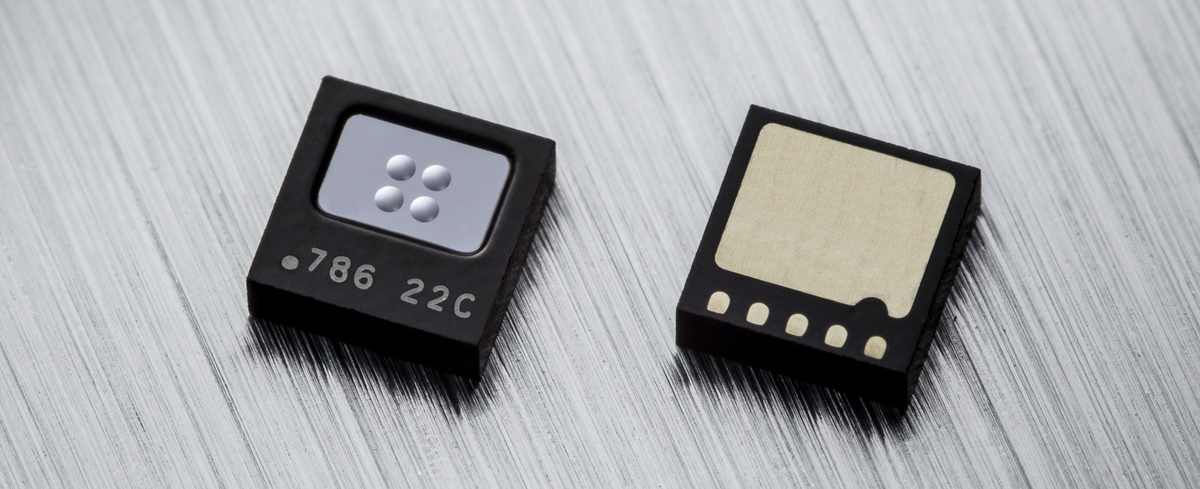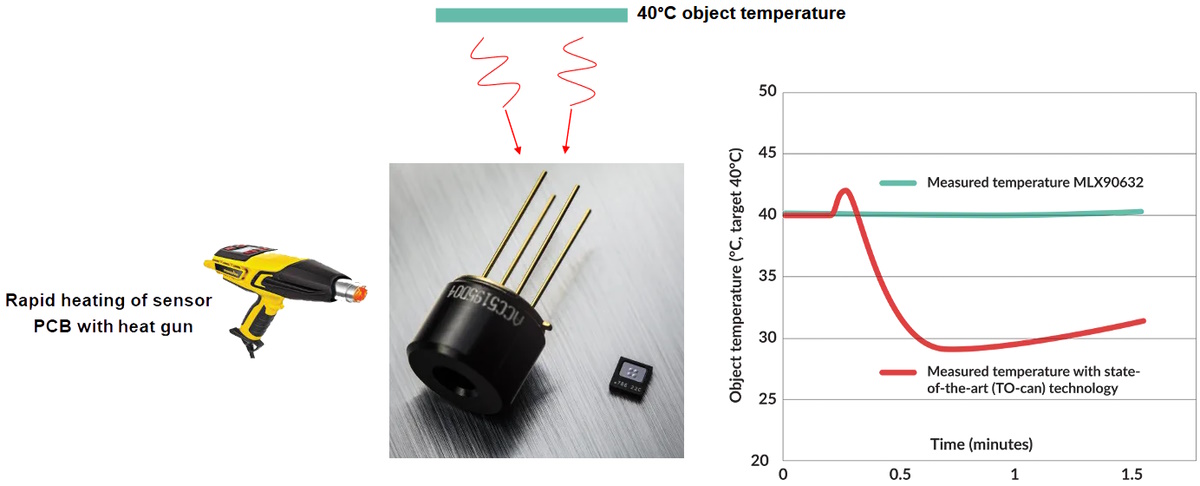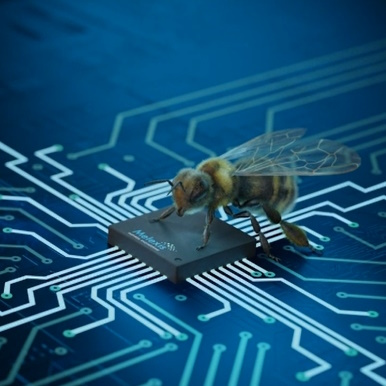I don’t like to boast but, as one of the leading engineers of my generation (according to my mother), I’m a dab hand at measuring things like voltage, current, and resistance. These days, we can measure electrical properties like this to extraordinary degrees of accuracy and precision using instruments that are relatively cheap in the scheme of things.
In some ways, we electrical and electronic engineers are spoiled because there are other physical properties that are much harder to measure cost-effectively with any degree of accuracy. What? You want an example? Well, take temperature as a case in point.
A couple of years ago, my wife (Gina the Gorgeous) and I had a new thermostat installed at home, but we weren’t convinced it was accurately measuring and displaying the ambient temperature. What I needed was an alternative way to measure the temperature that I could trust. As a first-pass cheap-and-cheerful solution, I ambled down to my local Home Depot emporium to pick up an outdoor thermometer. There was a shelf in the garden center with about 30 of the little scamps, each proudly reporting a different temperature over a range close to 10°F. As a result, I ended up averaging all the readings and purchasing the device that was closest to the mean.
This experience set me to wondering why the variance in readings was so pronounced. The more I investigated things, the more I discovered that accurately measuring temperature is something of an art. It probably won’t surprise you to hear that I ended up being sucked into an Alice in Wonderland rabbit hole with respect to the whole temperature topic, including things like thermoception (a.k.a. thermoreception), which is the biological sense by which we perceive different levels of heat energy (temperature) in the environment and in our bodies.
Have you heard of the Cricket Chirps Thermometer concept? Towards the end of the 1800s, American physicist and inventor Amos Emerson Dolbear (1837–1910) observed that crickets of a certain type were all chirping at the same time, and that the period between chirps was a function of temperature. After performing some experiments, Dolbear derived the following formula to describe the relationship between air temperature and the rate at which the crickets chirped.
temperature = 50 + ((chirps-per-minute – 40) / 4)
Did you know that the Celsius temperature scale initially started off with 0°C and 100°C representing the boiling and freezing points of water, respectively, which is opposite to how we do things today? (See also the What the FAQ are Celsius and Fahrenheit? entry in my What the FAQ blog series.)
We’ve all heard about the Kelvin Scale (K), but have you heard about the Rankine Scale (R or Ra), the Rømer Scale (°Rø), the Delisle Scale (°De), the Réaumur Scale (°Ré), and the Newton Scale (°N)? As a follow-on question, why do we use K and R as units for the Kelvin and Rankine scales, as opposed to °K and °R? Personally, I have a soft spot for the Newton scale. As I said in my What the FAQ are Kelvin, Rankine et al? blog:
The English mathematician, physicist, astronomer, and theologian Sir Isaac Newton (1642–1726) is widely recognized as one of the most influential scientists of all time. Newton devised his own temperature scale in 1702 but—although he called his device a thermometer—he didn’t use the term “temperature,” speaking instead of “gradus caloris” (“degrees of heat”).
Newton set as 0 on his scale to be “Calor aeris hyberni ubi aqua incipit gelu rigescere” (i.e., “the heat of air in winter at which water begins to freeze”), which is reminiscent of the modern Celsius scale (i.e., 0°N = 0°C). The problem is that Newton didn’t provide a second definitive reference point; instead, he provided 18 subjective reference points, along the lines of: “the heat at midday about the month of July,” “the greatest heat which a thermometer takes up when in contact with the human body”, and “the greatest heat of a bath which one can endure for some time when the hand is dipped in and is kept in constant movement.” Can you imagine if someone came to you and said, “Here’s a pile of money, can you build me a thermometer based on the Newton temperature scale, but I’m short-sighted so can you use a large font?”
If I’ve enticed you to want to learn more, including “What is Temperature?” along with common conversion formulas and a mega cool converter calculator, then feel free to check out the aforementioned What the FAQ are Celsius and Fahrenheit? and What the FAQ are Kelvin, Rankine et al? blogs. But, as is so often the case, we digress…
The reason the topic of temperature returned to the forefront of (what I laughingly call) my mind is that I was just chatting with Joris Roles, who is Marketing Manager at Melexis Microelectronic Integrated Systems.
Founded in 1989, Melexis currently employs 1900+ people (50% of whom are engineers) at 18 locations on three continents (Asia, Europe, and the USA). On the off-chance you aren’t already aware, Melexis is well-known for its sensor solutions, which include magnetic position sensors, inductive position sensors, pressure sensors, tire monitoring sensors, optical sensors, and—you’ve guessed it—temperature sensors.
We commenced our conversation with my asking if Joris could summarize the news he wished to impart into one pithy paragraph. He served me right by replying, “There is a big problem and we solved it!”
Well, that seemed simple enough. All that remained was for me to ferret out the nitty-gritty details. If the truth be told, this didn’t require much effort on my part because Joris was eager to explicate and expound.
As its name might suggest, wearable technology (a.k.a. “wearables”) is any technology that is designed to be used while worn. Common types of wearable technology include smartwatches, smart glasses, earbuds (a.k.a. “hearables”), etc. Wearable electronic devices are often presented close to or on the surface of the skin, where they can be used to detect, analyze, report, and transmit information such as vital signs and/or ambient data.
We started by agreeing that having wearables with the ability to measure skin temperature was useful for a wide variety of reasons. The question is what technology to use. The technology that is predominantly used currently is contact thermometry, but this is problematic for a variety of reasons, including the fact that it’s not easy to ensure good contact between the sensor and the skin outside of a laboratory environment.
The alternative is non-contact thermometry in which heat in the form of far infrared radiation (FIR) is captured by the sensor, which can subsequently report the temperature of an object (skin in this case) without touching it.
As fate would have it, the reason Joris and I were talking in the first place was the recent announcement by Melexis of their latest and greatest non-contact temperature sensor, the MLX90632. This device has five pins—two for power (3.3V) and ground (0V), two for I2C communications (1.8V or 3.3V), and one that can be used to modify the base I2C address. The I2C interface can be used to write calibration coefficients in the factory and to read temperature values in the field.

Meet the MLX90632 non-contact temperature sensor (Source: Melexis)
At this point, you may be reflecting on a couple of points, the first being that FIR-based non-contact thermometry has been around for a couple of decades, and the second being that Melexis already boasts a cornucopia of non-contact temperature sensors in its portfolio. So, you may ask yourself, what makes this new sensor so special?
The first pass answer to both points presented above is the new sensor’s teeny-tiny size, which is 3 x 3 x 1mm in a surface-mount QFN package. All earlier generation sensors are presented in TO-can packages. On the one hand, TO-can packages aren’t particularly large in the scheme of things; on the other hand, they are relatively humongous when compared to this new QFN device. Suffice it to say that, excepting a matter of honor such as responding to a Triple Dog Dare, you probably wouldn’t want to spend a large portion of your day sticking a TO-can package in your ear. By comparison, the MLX90632 can easily fit inside an earbud, along with a wide variety of other wearable products and medical appliances.
The MLX90632 non-contact temperature sensor is small enough to fit in a wide variety of wearable products and medical appliances (Source: Melexis)
Why is this so exciting? Well, one of the problems with non-contact sensors is that they perceive parasitic radiation from their own packages. Traditionally, having a larger metal can package has played a critical role in keeping the temperature stable. Having said this, as illustrated below, even state-of-the-art sensors in metal cans are susceptible to thermal shock (thermal gradients) resulting from rapid heating or cooling. Furthermore, existing packaging strategies based on metal cans are not compatible with miniaturization.

The MLX90632 trounces a standard sensor in this thermal shock experiment (Source: Melexis)
By comparison, as illustrated above, the MLX90632’s high thermal stability and active compensation for thermal gradients results in its being insensitive to thermal shock. The “secret sauce” allowing the MLX90632 to perform its magic is the combination of super-secret technologies and cracking-clandestine compensation algorithms that allow it to achieve a medical grade accuracy of ±0.2°C (more information on eliminating thermal disturbances in non-contact temperature measurement can be found here).
The main question I’m left with is to wonder if the guys and gals at Melexis could convene a confab with the chaps and chapesses who conceived the errant thermostat in my home in the hope that, together, they could come up with a solution that will cause the temperature perceived by the thermostat to at least approximate the actual temperature in our home, thereby causing the radiance of Gina’s smile to once again lighten my life.





One thought on “The Non-Contact Body Temperature Measurement Market Heats Up”